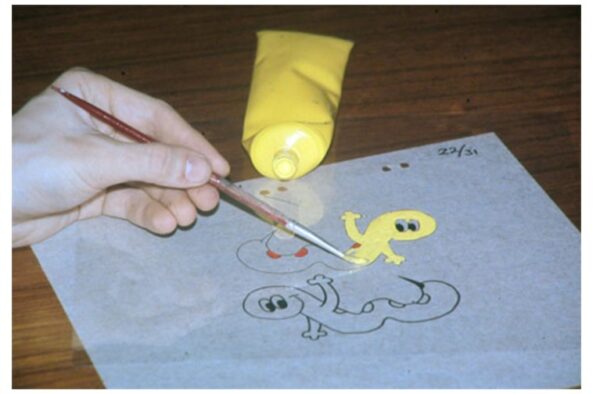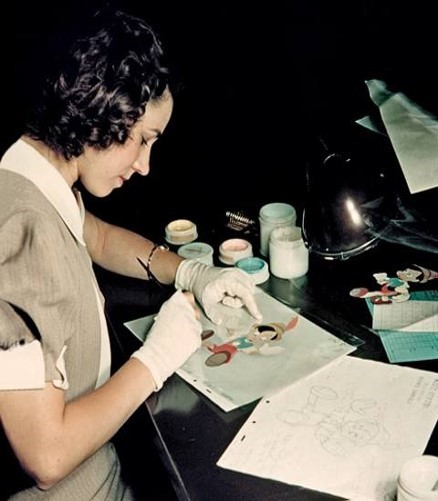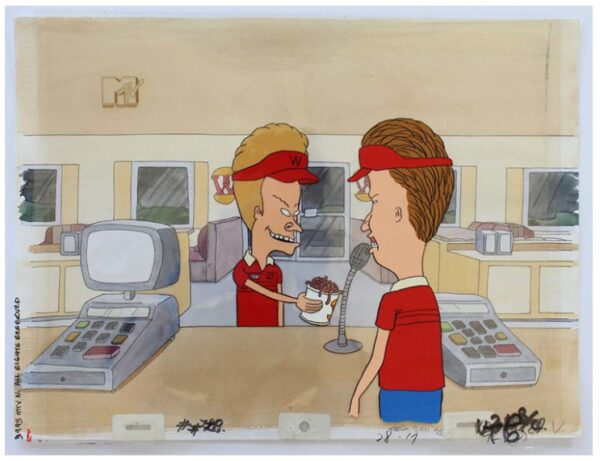When we all read the term animation, it’s pretty natural to associate animation with the realms of 3D design and computer-generated imagery (Computer Generated Imagery).
The foundations of contemporary animation are these. There is, nevertheless, a place for older animation techniques.
To this day, almost every famous cartoon from the last century uses cel animation as its foundational technique. In spite of the fact that most of it can be automated by design tools nowadays, it continues to be an integral element of the animation projects we do every day at BuzzFlick – one of the best animation studios in Los Angeles.
Throughout the 20th century, Disney’s cel animation films captivated audiences of all ages. There was a dramatic shift in how movies looked and felt with the advent of conventional hand-drawn animation.
But here comes the billion-dollar question, what is cel animation, and how does it function? Our in-depth guide will provide you with all the info you need.
What Is Cel Animation & How Does It Work?
The term “cel” refers to the sheets of transparent plastic used in the production of cel animation, a technique for making hand-drawn 2D animation.
After careful thought and preparation, animators finalize their work by transferring their sketches to cels, thin sheets of plastic with see-through transparency. There is one drawing on each cel, with an outline on one side of the plastic and a colored fill on the other.
(A Cel Animation Music Video Produced by BuzzFlick)
Photographs are taken of these “cels” over time as they are superimposed on a background. When sped up to 12 or 24 frames per second, they give the impression of continuous motion.
As a result of the prevalence of digital media nowadays, conventional cel animation is rarely used in new works.
While modern 2D animation takes cues from cel animation, the majority of the work is done digitally. To speed up the production of 2D animations, digital software is increasingly being used.
Helpful Readings:
The Cel Animation process
Cel animation is a time-consuming and costly process that requires a sizable workforce.
For the magic to happen, a script must be written and then given to a storyboard artist. It is common to practice for a lead animator to sketch out each major pose and record the time of the shot on a dope sheet once the timing of the shot has been finalized.
Everyone, from the director to the colorist, relies heavily on the dope sheet. It specifies the duration of each frame and ensures that the cels always appear in the same order.

Junior animators draw the in-betweens to smooth the movement between poses after the primary poses have been sketched out and the dope sheet has been finalized.
After the layout and animation of a frame have been approved, the pencil sketches are given to an inker. The inker uses black ink to transfer the artwork from a translucent film of thin plastic (a cel) to the film.
A “colorist,” working with cel paint, colors in the line work as soon as the ink is dry. Each cel has a clean, consistent look because the color is applied backward from the ink.
More artists are hard at work inking and coloring each cel while others are busy constructing the backdrops for each scene.
Because they are displayed for longer than a single drawing, they are usually more intricate and nuanced in their shading. The scene’s background will be drawn sufficiently large if a character is traveling through it.
A photographic crew is given the cels and the backdrops after they are finished. Drawings are stacked in accordance with the dope sheet, and photographs of each layered frame are taken. It is the sequential playing of these frames that constitutes the animation.
Useful Resource:
Materials used in Cel Animation
Plastics played a significant role in the development of cel animation. Cel animation would not exist if it weren’t for thin, pliable sheets of translucent, colorless plastic.
Cellulose nitrate was the first plastic ever made. It wasn’t an ideal material by any means. Yellowing, creasing, and releasing potentially dangerous gases all occurred rapidly, with aging and flammability being other issues.
In an effort to extend the cels’ useful life, the industry shifted to using cellulose acetate. However, the acetate did degrade with time, albeit at a far slower rate than its predecessor. The vinegar syndrome smell that it gave off was the result of its chemical makeup.

Cel paint, as it is known in the animation industry, is a thick, opaque acrylic or gauche. The paint deteriorated in the same way as the plastic cellulose did over time. “Paint lifting,” in which the paint begins to flake off the plastic and fracture, is a common problem with modern cels.
Disney has spent a tremendous amount of resources ensuring the safety of its historic cel animation artwork. They have a special storage area where they aim to preserve the original cels by preventing the environment from being too dry or too humid. An in-depth article on Disney’s cel storage system may be found here.
The Transition to the Digital
Remarkably, Disney’s final picture to be created entirely with traditional cel animation was 1988’s Oliver and Company.
The Little Mermaid (1989) was their next film, and it used a new coloring technique called CAPS (Computer Animation Production System).
The goal of the CAPS project, a collaboration between Pixar and Disney, was to digitize cel animation in order to reduce production costs without compromising on quality.

To digitally load the animator’s sketches for inking and coloring, the system provided artists with a digital workspace.
CAPS streamlined the production process for animation studios and encouraged further digital innovations.
Over time, they used 3D animation techniques in their 2D movies as well. Software like ToonBoom has replaced traditional methods of creating 2D animation.
Some animators and studios still prefer to create rough sketches by hand, while others have completely abandoned this method. To this day, only nostalgic animation buffs and history buffs employ cel animation in any significant way.
Watching this footage of a Snow White scene being painstakingly recreated reveals the inherent constraints of cel animation and explains why the project took so long.
Is 2D animation on the way out?
As a result of the failure of a few 2D features, Disney has shifted to producing only 3D animated pictures. They have no intentions to create any further 2D films beyond Winnie the Pooh, which they made in 2011.
Western feature films may have abandoned 2D animation, but Japan is cranking out Oscar-worthy Anime.
Many loved 2D animated films, such as “My Neighbor Totoro” and “Spirited Away,” were created by Studio Ghibli. The success of these movies shows no signs of slowing down, and there are currently no plans to convert to 3D.
While 2D animation may no longer be Disney’s pride and joy, it has not lost its position in the realm of television or feature films. Lots of kids’ shows have found success as 2D animations and have no ambitions to transition to 3D.
Even though cel animation is no longer practiced, the 2D animation industry is booming. The skill and dedication required to create animation, according to artists all over the world, will endure long after the tools used to make it become obsolete.
Memorable Examples of Cel Animation
Disney introduced color, movement, and realism to animated films with cel animation in the late 1930s, bringing the technology to the attention of the public for the first time. Among the most prominent instances of traditional animation films are:
Snow White and the Seven Dwarves (1937)
Snow White is frequently mentioned while discussing the history and future of cel animation by critics and professionals. It premiered in 1937 and held the distinction of being the first American feature-length animated film. Character outlines were inked by hand onto each cell by animators, setting the bar for what could be achieved in the medium.
Sleeping Beauty (1959)
Why is the original work from Sleeping Beauty so beautiful? This was a question posed to ArtInsight readers in 2015. Colors were hand-inked for the 1959 Disney film, but the ink designs were transferred to the cell automatically using the cutting-edge technology of xerography. Consequently, Disney was able to produce frames with greater visual complexity with less effort.
The Lion King (1994)
Disney has been making classic cel animations for about fifty years at this point. And the release of The Lion King coincided with a period of critical acclaim for Disney films known as “the Disney Renaissance.” To this day, The Lion King is held up by many as an example of Disney’s animation at its finest.
The Princess and the Frog (2009)
Since Disney’s 2006 acquisition of Pixar Animation Studios, CGI cartoons have become the norm in the media. However, in 2009, Disney released The Princess and the Frog, a hand-drawn film directed by the same people responsible for The Little Mermaid. It was one of the final Disney cartoons to be drawn by hand.
Interested in Cel Animated Videos? Contact BuzzFlick
A lot of you must be thinking at the beginning of this blog that this is an outdated animation style, but in reality, it’s not. Even the big animation studios like Pixar, Illumination, and our favorite Disney are still using this technique but in a modernized way.
Similarly, as 2D and 3D animation production company, BuzzFlick is also following this practice. We have a highly-professional team of cel animators. Cel animation is one of our core animation services.
If you are wondering what other animation services we are providing, then check our services list below:
- 2D animation services
- 3D animation services
- Motion graphics services
- Stop-motion animation services
- Whiteboard animation services
Amazing right? We are a full-fledged video animation agency. Whether you want a 2d animated explainer, a 3D animated video ad or a whiteboard animated demo video, we make it all.
(A Cel Animation Music Video Produced by BuzzFlick)
(A Cel Animation Music Video Produced by BuzzFlick)
Cel Animation FAQs
What was Disney’s last cel animation?
In 2011, Disney released Winnie the Pooh, their final hand-drawn cel animation. The transition marked the end of the golden age of 2D animation, which had dominated the entertainment industry since the release of Snow White and the Seven Dwarfs in 1937.
Sleeping Beauty (1959) and The Lion King (1994) are more examples of hand-drawn Disney classics (1994). Winnie the Pooh, based on the writings by AA Milne, has been a Disney staple since the company’s earliest days.
What are the advantages of traditional animation?
The superior quality it produces is the primary benefit of traditional animation. By having each frame drawn by hand by talented artists, it introduced new dimensions of color, depth, and realism to the world of animated movies. The biggest drawback of cel animation is that it takes so long and is so expensive to make.
Is cel animation still used today?
Toon Studios, the studio most closely identified with cel animation and the Golden Age of Disney (think Sleeping Beauty and 101 Dalmatians), emerged in Hollywood at the turn of the 20th century. But the approaches have maintained a cult following among film buffs and artists for decades. Those currently working in cel animation often combine it with digital methods.
How much can cel animation cost you?
Cel-animation is one of the most expensive and time-consuming animation styles. It depends from project to project. Sometimes it can cost $10,000 per minute.
If you want to learn more about animation costs, then check out our following resources:
To Recapitulate
Although the cel animation process is time-consuming, the resulting visual styles are often unique and memorable. Over the course of animation’s century-plus history, technology has made tremendous strides.
Historically, cel animation was quite risky due to the usage of flammable materials and chemicals that could be harmful to human health.
Even while traditional animation is still practiced and widely watched today, western animation has embraced digital 2D and 3D animation in a way that no other region has.
This in no way negates the need for the traditional steps of writing a script, creating a storyboard, sketching out the characters, editing the sketches, inking the drawings, coloring them, and finally photographing the finished product.
In fact, the opposite is true; these are and will continue to be animation’s bedrock principles.




